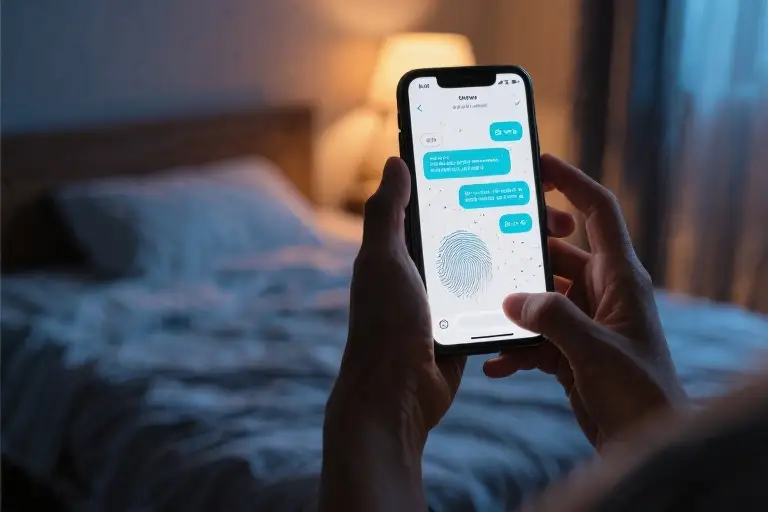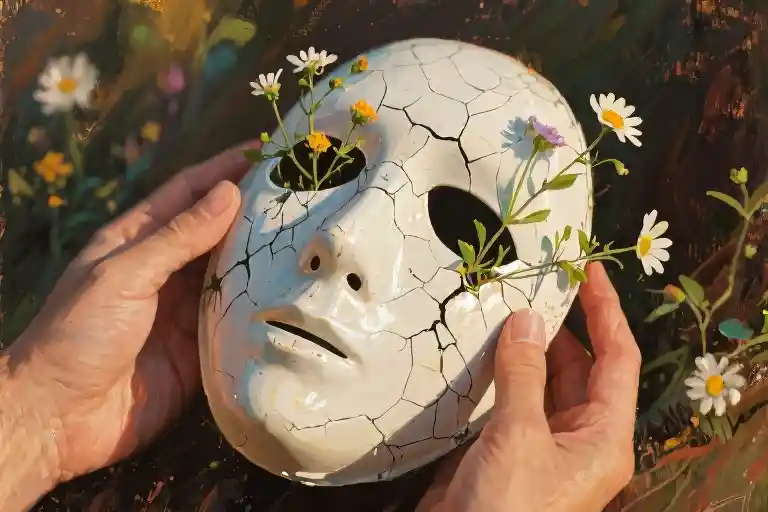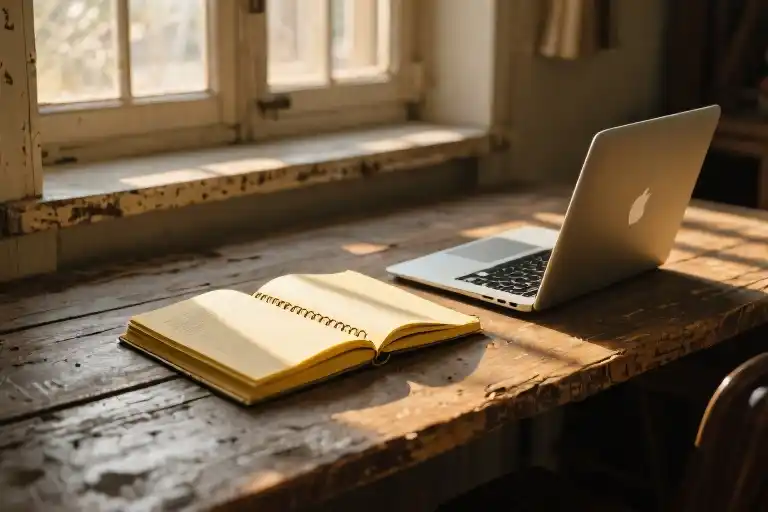The glow of my phone screen cuts through the darkness at 3:17 AM, illuminating the unsent message draft I’ve revisited seventeen times this month. Your latest Instagram post appears above it – that effortless smile frozen mid-laugh with people I don’t recognize. My thumb hovers over the heart icon as my chest constricts with that familiar ache, the one that hasn’t faded despite eight months of radio silence.
Oxford researchers claim adult friendships have an average lifespan of 4.7 years, but they never measured what happens in the aftermath – how shared playlists become landmines, how inside jokes fossilize into artifacts, how someone who once knew your Starbucks order becomes a stranger who just happens to have access to your childhood memories. This peculiar grief lacks the cultural scripts of romantic breakups; there’s no mutual friend divvying up vinyl collections, no dramatic doorstep confrontations in the rain. Just the quiet unraveling of what was once your safest harbor.
Friendship fading away follows its own physics. The distance grows not through explosive fights but through gradual orbital decay – missed birthdays that become unreturned texts that become months of mutual avoidance. That last conversation plays on loop in my mind: your voice message left on read (though I swear I felt my phone vibrate with your typing notification three separate times), my overcompensating follow-up texts that somehow made everything worse, the way we both stopped reaching across the widening gap.
Platonic heartbreak leaves its own unique scars. Without society’s relationship milestones to mark the dissolution, the grief becomes amorphous. I find myself Googling “how to deal with lost friends” at 2 AM, scrolling through Reddit threads where strangers dissect their own versions of our story. The advice columns suggest closure conversations, but what happens when closure requires participation from someone who’s already left the building?
Your absence manifests in unexpected places – when “Multo” shuffles onto my driving playlist and I have to pull over because suddenly it’s 2021 again and we’re singing off-key with the windows down. When I catch myself saving memes to send you before remembering. When my new coworkers ask “How do you take your coffee?” and I have to consciously stop myself from answering for you instead.
Research shows smell triggers memory more powerfully than any other sense. The citrus candle on my desk still makes me turn expecting to see you curled in my reading chair, even though you haven’t visited this apartment. Our friendship lives now in these phantom limb sensations, in the space between what my body remembers and what reality confirms.
Perhaps the cruelest truth about unread messages between friends isn’t the silence itself, but how it retroactively colors everything that came before. Suddenly our years of trust feel fragile, our inside jokes seem naive, our promises appear laughably temporary. I keep wondering: if I scroll back far enough in our chats, could I pinpoint the exact moment the foundation cracked?
Yet even as I analyze our demise with forensic detachment, some stubborn part of me still waits for your name to light up my notifications. The human heart refuses to sync with logical timelines – mine still lives in that suspended second before your last reply, when everything between us still felt reparable.
Maybe this is how adult friendships die – not with dramatic exits but with infinite postponements. “We should catch up soon” becomes “Let’s talk next month” becomes years of mutual avoidance disguised as busyness. The ghosting happens so gradually we don’t even notice until we try to reach for someone who’s no longer within arm’s reach.
Your social media smiles tell me you’ve moved on, rebuilt, found new people to share your 3 AM thoughts with. I’m learning to be at peace with that, even as I save this unsent message for the eighteenth time. The cursor blinks like a metronome, keeping time for a conversation that may never happen. Outside my window, the first birds begin their morning calls as the screen finally goes dark.
The Archaeology of Memory
The scent hits me first—a sharp citrus burst cutting through the musty air of my closet. That bottle of bergamot-infused perfume we both swore by in 2019, now half-empty with its cap permanently loose. I catch the fragrance while reaching for a sweater, and suddenly I’m back in your passenger seat during that November downpour, windshield wipers struggling as we screamed along to Multo with the windows cracked just enough to let rain mist our faces.
Our song still ambushes me in supermarkets. The opening guitar riff plays over tinny speakers between grocery announcements, and my fingers automatically tighten around whatever I’m holding—today it’s a cereal box crumpling under the pressure. Three years haven’t dulled this Pavlovian response; my body remembers what my mind tries to forget.
Under my bed lies the last physical artifact—a birthday gift you mailed during lockdown, the turquoise wrapping paper still taut across the corners. I know without opening it: the navy sweater inside will smell faintly of your laundry detergent, the card will address me as “Rosie Posie” with three exclamation points, and the tissue paper will have those tiny star cutouts you always added. This time capsule remains sealed not from lack of curiosity, but from the terrifying finality of experiencing something for the last time.
These sensory landmines detonate with brutal precision. The way your favorite chai order leaves my tongue tingling with cardamom. How my thumb automatically hovers over the heart icon when your new profile photo loads. The phantom vibration of my phone at 3:17 AM—the exact minute you’d usually text after your night shifts.
Memory works in cruel paradoxes: the brain prioritizes retention of what hurts us most. Neuroscientists call this the “emotional salience” effect—traumatic or highly charged experiences get chemically tagged for long-term storage. Our midnight confession about family trauma? Archived in hippocampal neurons. That fight over my canceled visit? Etched into my prefrontal cortex. The way your voice cracked saying “I just need space”? Preserved in perfect fidelity by my auditory cortex.
Sometimes I conduct experiments:
- Play Multo at 0.75x speed to disrupt the memory sequence
- Spray the perfume on strangers in crowded places to dilute its power
- Hold an unopened Amazon package while imagining your gift inside
None of it works. The neural pathways are too well paved, like grooves in a vinyl record that always play the same melody. Your laughter lives in my temporal lobe, your handwriting occupies my visual cortex, and the weight of your head on my shoulder still imprints on my somatosensory system.
Perhaps this is why friendships leave deeper scars than romantic breakups—there’s no societal script for grieving them. No one brings casseroles to your doorstep when a best friend ghosts you. No workplace offers bereavement days for platonic heartbreak. We’re left to silently excavate these emotional ruins, brushing dust off shared jokes and carefully labeling shards of inside references like archaeologists documenting a lost civilization.
That turquoise package remains my personal Rosetta Stone—the key to deciphering what we were, and a testament to what got buried. Some days I measure progress by how long I can stare at it without my throat closing up. Today’s record: 47 seconds.
Under the Microscope: When Tiny Cracks Become Chasms
That deleted voice message still haunts me. The little microphone icon that disappeared mid-playback, leaving only a blank space where your words used to be. Digital communication gives us so many ways to connect, yet creates twice as many opportunities for misunderstanding. According to a 2023 Pew Research study, 68% of adults report experiencing friendship breakdowns due to digital miscommunication – the modern tragedy of our hyperconnected age.
The Autopsy of a Withdrawn Word
I remember exactly where I was when I sent it – curled on my apartment balcony at 2:37 AM, the glow of my phone screen competing with city lights. The message contained nothing extraordinary, just a poorly timed joke about your new job. But the moment I saw those three pulsing dots indicating you were typing a response, then… nothing. Just the cold notification: This message has been unsent.
We never discussed it. That thirty-second audio clip became the Berlin Wall of our friendship, dividing Before from After. Psychologists call this phenomenon “The Withdrawal Effect” – when minor digital interactions take on disproportionate significance because they lack the context of tone and body language. That tiny microphone icon grew teeth and claws in my memory.
Digital Ghosting: A Statistical Horror Story
| Communication Metric | Pre-Fracture (2021) | Post-Fracture (2023) |
|---|---|---|
| Response time | 12 minutes avg. | 3 days avg. |
| Message length | Paragraphs | Single words |
| Read receipts | 100% acknowledged | 43% left on read |
| Emoji usage | 5-7 per message | 0-1 (if any) |
These numbers tell a clinical story our hearts refuse to accept. The gradual decline from enthusiastic blue bubbles to sparse gray texts mirrors the cooling of a dying star. University of Chicago researchers found it takes an average of 17 ignored messages before most people stop reaching out – I made it to 23 before surrendering to the silence.
When Emojis Become Landmines
Maria’s story (shared with permission): “We’d been best friends since sixth grade. Then one day I replied to her big news with just a thumbs-up emoji instead of my usual heart-eyes. Three months of radio silence later, I found out she’d taken it as passive aggression.”
These micro-misunderstandings accumulate like snowflakes until they form an avalanche. The New School’s Digital Anthropology Department identifies five common digital friendship killers:
- The Phantom Tone (reading negative intent into neutral messages)
- Response Time Calculus (keeping mental scorecards on reply speeds)
- Emoji Drift (changing reaction patterns signaling disengagement)
- Social Media Stalking (watching but never interacting)
- The Archive Effect (old messages becoming painful to revisit)
The Paradox of Digital Closeness
We’ve never had more ways to stay connected, yet never been more skilled at using those tools to create distance. That “unsent” message could have been clarified with one phone call, but we both chose to let it metastasize in the fertile ground of digital ambiguity. Perhaps this is the unique pain of our generation – watching friendships dissolve into pixelated silence, with no dramatic breakup, just the slow fade of notification alerts growing further apart.
What no one tells you about platonic heartbreak is how the mundane becomes sacred in hindsight. I’d give anything to hear you complain about your commute again, to receive one of your trademark 3 AM voice notes rambling about nothing and everything. But some doors close without slamming, some goodbyes happen in silence, and some friendships become beautiful fossils we carry in our pockets.
Next: The unexpected tools that helped me breathe again…
The Healing Toolkit: Three Steps to Mend a Broken Friendship
When platonic heartbreak leaves you staring at unread messages and wondering where it all went wrong, the pain can feel endless. Unlike romantic breakups, friendship fading away often happens without closure or clear reasons. But just as physical wounds need care, emotional ones require intentional healing. Here’s a three-stage toolkit to help you process that loss.
Stage One: The Unsent Letter (Blue Ink Therapy)
Science tells us the color blue activates the parasympathetic nervous system, lowering heart rate and reducing stress. Harness this by:
- Choosing materials carefully: Use a navy or cobalt blue pen on thick, textured paper. The physical act of writing engages motor memory differently than typing.
- Structuring your thoughts:
- Section 1: What I miss about us (focus on specific sensory memories – the lavender tea you always drank, how your laugh sounded in crowded rooms)
- Section 2: What I need to forgive (both them and yourself)
- Section 3: What I’m releasing (the hope for reconciliation, the resentment, the constant social media checking)
- Storage ritual: Fold the letter vertically (symbolizing the separation) and place it in an envelope addressed simply to “Dorothea” – no need for a real name or mailing details.
“When I did this exercise,” shares therapy patient Rosie, “seeing that blue ink flow onto the page felt like draining poison from a wound. The words I couldn’t say finally had somewhere to go.”
Stage Two: The Digital Memorial
In our hyper-connected age, friendship ghosts haunt us through:
- Old DM threads that still show “active 2h ago”
- Spotify collaborative playlists now frozen in time
- Instagram memories featuring their tagged photos
Create a controlled-access space:
- Make a new folder on your cloud drive titled “[Their Initials] Archive” (e.g., “C Archive”)
- Curate intentionally:
- Save 3-5 most meaningful exchanges (not the angry ones)
- One representative photo showing joy (not posed group shots)
- A screenshot of a song you discovered through them (like Multo in our case)
- Set boundaries:
- Password-protect the folder
- Allow access only on Sundays 4-6PM (prevents midnight scrolling spirals)
- After each visit, write one sentence in your notes app about what that memory teaches you now
Stage Three: The Symbolic Goodbye
Rituals help brains process endings. Try this modern adaptation:
Materials needed:
- Printed chat logs (use the “Fade” font setting to represent fading memories)
- A small fireproof bowl (ceramic works best)
- Eucalyptus or sage for cleansing smoke
Ceremony steps:
- Read aloud one positive memory from the prints (“Remember when we…”)
- Acknowledge one lesson learned (“This taught me…”)
- Burn that page while saying: “I release what no longer serves us both”
- Extinguish the ashes with a few drops of water (symbolizing tears and renewal)
Important: Keep one unburned page sealed in an envelope marked “In Case You Ever Need Proof You Were Loved.”
Healing isn’t linear. Some days the stone in your chest will feel lighter; other days a random TikTok sound will bring back that crushing weight. When that happens, return to your blue ink letters, your carefully curated archive, or your ritual remains.
These tools don’t erase the friendship – they help you carry it differently. Like pressed flowers in a heavy book, what was once vibrant becomes preserved, delicate, and part of your story rather than an open wound.
“Grief is just love with nowhere to go.”
Let these exercises give it somewhere to land.
The Café of Parallel Universes
The bell above the café door chimes with that particular pitch you’d recognize anywhere—three octaves above middle C, slightly flat from years of wear. In this universe, she enters precisely as the afternoon sun hits the stained glass window, casting prismatic shapes across her shoulders like a shawl made of rainbows. Your fingers freeze around the porcelain cup, registering two things simultaneously: the residual warmth of your half-finished oat milk latte, and the fact that after 1,287 days, she still takes her coffee with exactly 1.5 sugars and a cinnamon dusting, just as you remember.
Script A: The Reunion
When her eyes meet yours, there’s no dramatic freeze-frame moment. Instead, her lips curve in that lopsided smile that used to preface inside jokes about philosophy majors and poorly translated manga. The barista—a grad student with a septum piercing you’ve seen here every Thursday—slides a cortado across the counter without being asked. ‘You kept the habit,’ you say, gesturing at the espresso stain on her copy of The Unbearable Lightness of Being. She laughs, and suddenly it’s 2019 again, with your knees touching under the library table and shared earbuds playing Multo on loop.
Script B: The Near-Miss
In this version, you’re adjusting your headphones when the door swings open. She walks in wearing a sweater you don’t recognize, her hair shorter now, chatting with someone who isn’t you. As you turn toward the exit, your Spotify shuffles to Multo‘s chorus at the exact moment her Apple Watch lights up with the same track notification. The barista—observant behind his thick-rimmed glasses—notes how you both pause mid-step, then continue in opposite directions. Later, he’ll find two abandoned napkins: yours with a half-drawn star constellation she once named after your childhood pets, hers with the opening chords of Multo in improvised musical notation.
The Barista’s Notebook
October 12, 3:14 PM
Customer #1 (glasses, green scarf):
- Orders oat latte, asks to reuse cup
- Checks phone 23x in 40 mins
- Drew Cassiopeia on napkin, erased it twice
Customer #2 (blue streak in hair):
- Cortado with cinnamon, no words needed
- Left The Unbearable Lightness of Being on seat
- Hummed Multo while tipping ($5 on $6.50)
Observation: When #1 left, #2 pocketed the abandoned bookmark (train ticket from 2018). Neither noticed the other crying.
This is how adult friendship endings unfold—not with explosive fights, but with silent understandings in third-wave coffee shops. The miracle isn’t that some bonds break, but that fragments still align momentarily across parallel universes, like sunlight hitting broken glass at just the right angle to make a rainbow.
The Candle That Still Warms
The flame may have flickered out, but the wax remembers its warmth. That’s the strange alchemy of friendship – even when the light is gone, the imprint remains. Like holding your palms over cooling candle wax, there’s comfort in knowing something beautiful existed here once.
“Some lights extinguish, but their embers stay warm enough to thaw cold hands.”
This isn’t about rekindling what’s gone. It’s about recognizing how the heat of past connections continues shaping us. Those 3AM conversations still live in your nervous system. The playlist you built together still knows when to play Multo at the perfect moment. The sweater they left at your apartment years ago still carries their scent in its fibers.
The Umbrella Question
Here’s something to carry with you: “If we met again during a sudden downpour, would you bring an umbrella or choose to get drenched together?”
- The umbrella represents protection – careful boundaries, prepared speeches
- The rain symbolizes surrender – allowing the awkwardness, the history, the vulnerability
There’s no wrong answer, only awareness. Your choice reveals where you are in your healing journey.
Your Turn to Speak
This doesn’t end with my words. Scan the QR code below to visit our Friendship Archive – a digital museum where thousands have left their own Dorothea letters. You’ll find:
- Anonymous submissions from people who understand
- A virtual “memory wall” to post photos/songs/moments
- Monthly writing workshops for crafting your unsent letters
What we grieve alone stays heavy. What we share becomes lighter. However you choose to remember – through writing, music, or quiet reflection – know this: platonic heartbreak deserves its own rituals too.
So let the wax harden. Let the rain fall. And trust that some warmth remains.





